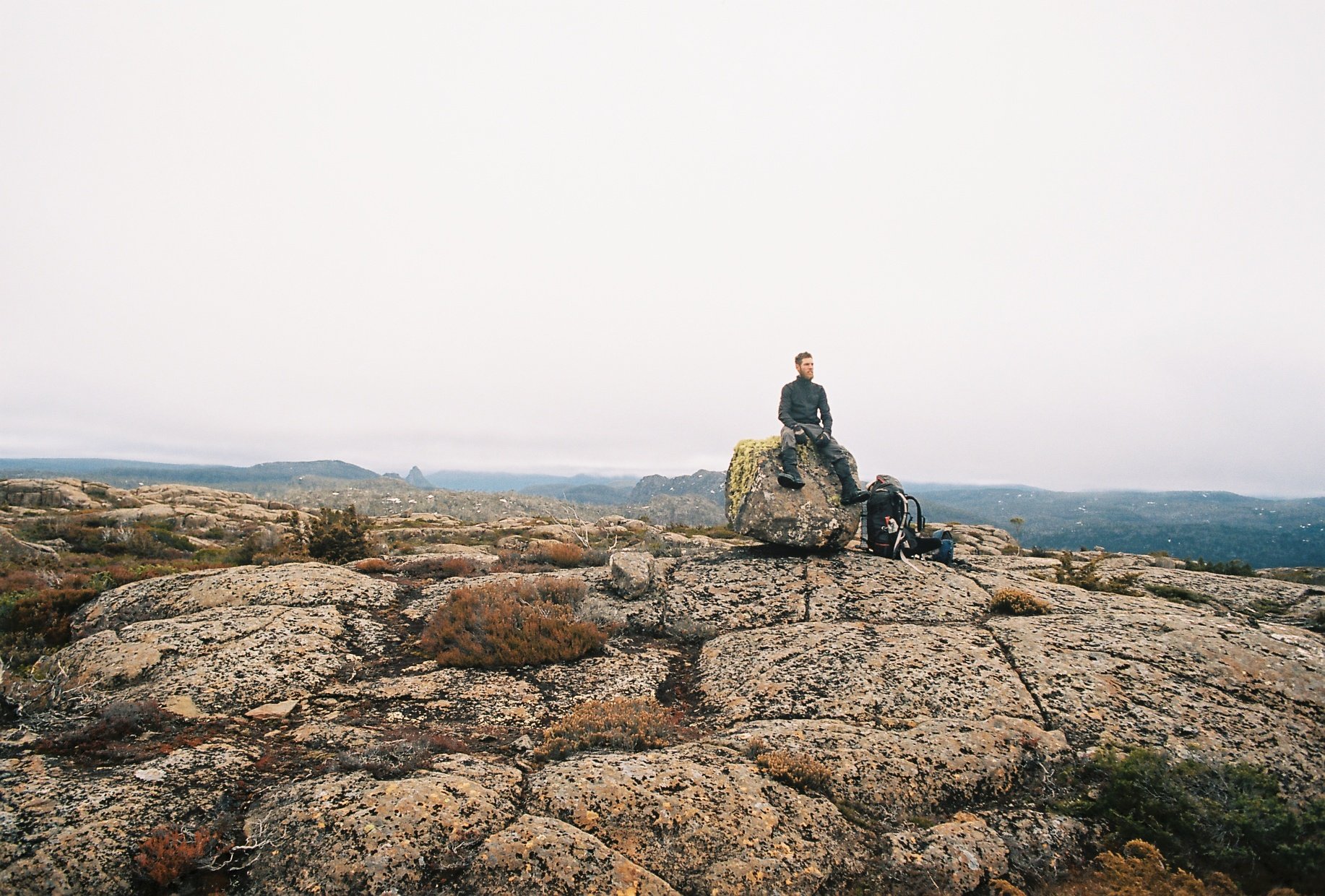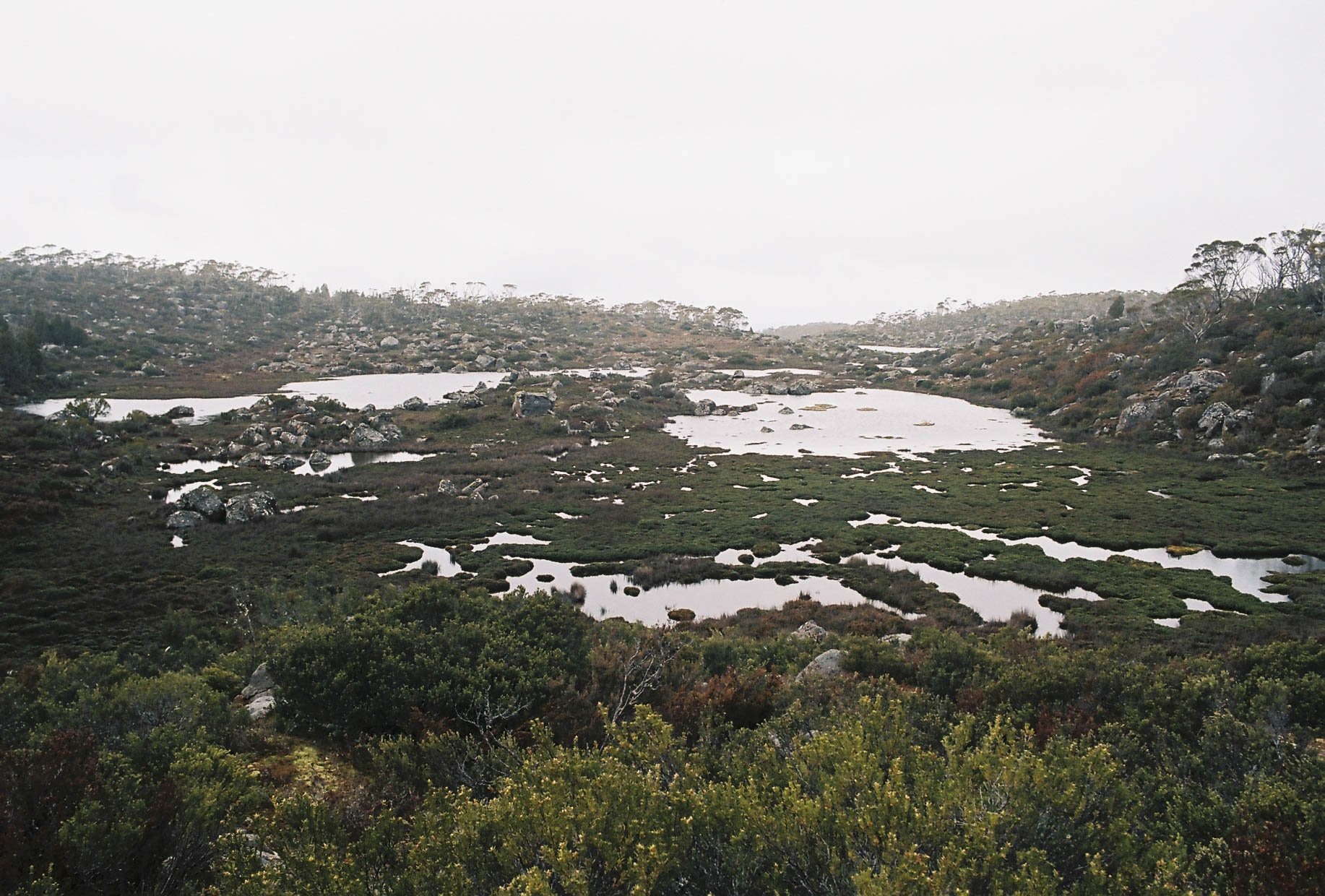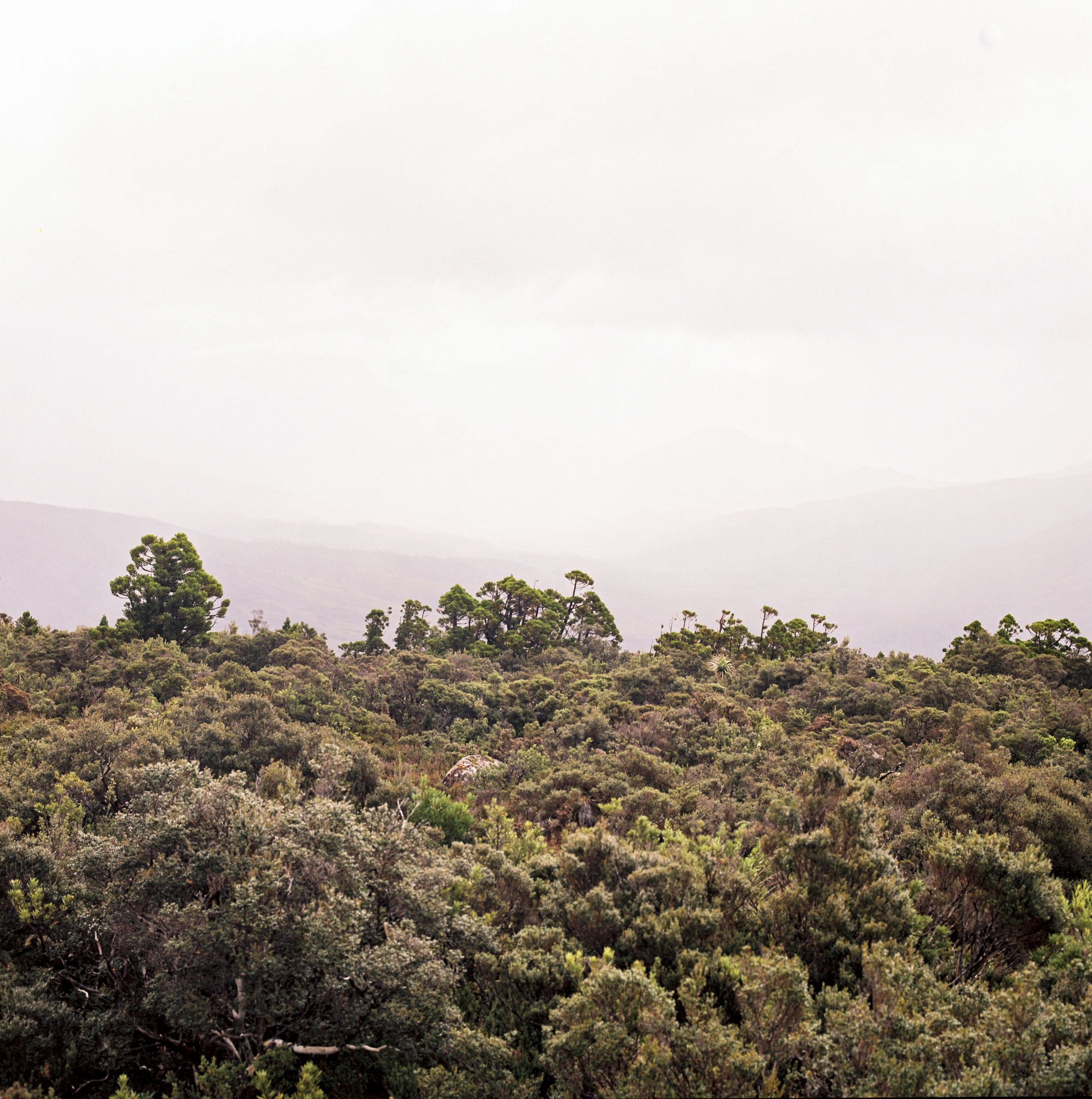I saw the creature cross the road, but at first I wasn’t sure what it was.
In fact I’m still not sure what it was.
Are there black panthers living in the Victorian Alps?
We were riding our bikes from Mansfield to Whitfield, an obscure leg across the Victorian Alps. We found ourselves climbing up onto a reasonably tall range, perhaps up to around 1200m above sea level. We had entered an extensive and undulating plateau, giving home to native eucalypt highland forest. There was a small town we passed through, called Tolmie. From there it was a long stretch of road through the native forest, and eventually winding down the hill, to the town of Whitfield.
We had started the descent, and I was ahead, Pat riding a few hundred metres behind me. It was a fair gradient and I leant into the corners a little bit. The sun was out, but it was casting long shadows into the forest in the late afternoon light.
The road from Tolmie to Whitfield. Note that there is no large black cat visible in this photograph.
I hit a straight and looked ahead. About half a football field length ahead of me, I spotted a creature crossing the road. At first I thought it might have been a wallaby, because it was sort of bounding across the road. As I got closer, and that happened pretty quickly as I was traveling at high speed, I realised it couldn’t have been a wallaby, because it was completely black, and it was the wrong shape. It was bounding across the road on four legs.
It must be a wild dog, my mind figured. I was now only a basketball field length away. However, as it hopped off the road, it extended a long black tail, that was even in width all the way to the end and was at least half the length of the entire body of the creature. If that tail belonged to a dog, it was no dog I had ever seen.
Then, the realisation hit me. The only thing that could have a tail like that and move like that is a cat. But this realisation posed a problem, because this cat was enormous. The ridge of its back would have reached up to my mid thigh if I was standing on the road right next to it. This was no ordinary feral cat. We are talking a cat that is nearly four times the size of a household cat. I got a clear view of it, and I was probably only about 20 metres away from it when it disappeared into the trees.
I longed to stop and discover more about this creature, but gravity was calling me down the slope and I did not slow down as I crossed the tarmac where the paws of the creature had been only a few seconds ago.
Part of my mind still wasn’t convinced, but there was also an exciting elation. What if I had just seen a black puma? Then I realised that there were probably no black pumas anywhere in the world, let alone Australia.
Black panthers on the other hand, are a different matter entirely.
Church in Whitfield
We rolled into Whitfield and went straight to the pub there. We had just sent arguably one of the best descents of the whole trip, with or without any big cat sightings… We were grinning from ear to ear as we ordered a pint. Wearing our bikie clothes, we were dressed a bit differently from the majority of patrons at this very stylish pub, packed with weekend trippers from Melbourne, the big smoke.
The waitress behind the bar asked us about where we had come from, and we told her that we had just come down the hill from Tolmie. I asked her where she was from and it turned out that she was a local and had grown up in the area. I told her about my encounter with what appeared to be a large black cat. At the recounting of my sighting, her eyes went wide and she asked me:
’Are you shitting me?’
When I convinced her that I was simply recounting what I had seen, she said:
‘The local farmers near where I grew up, they’ve been seeing a big black cat for years. No one has shot it, or has even taken a photo of it. But we call it the Panther of Tolmie.’
The view from the Omeo Highway.
Now to add just one more dimension to this story, I shall note here that a few days later we rolled in to Bright and we caught up with our mate Pauly who had just managed to score himself a sharehouse after living in a van for a good long time. Pauly grew up on a sheepfarm, in the Victorian town of Strathbogie. When I told him the story of my sighting of the Panther of Tolmie, he just shrugged his shoulders and said “Back around where I grew up, we had the Strathbogie Panther.’
So that was settled then. The creature I had seen cross the road must have been a black panther. Even if one day it turns out that the Panther of Tolmie is an unusually shaped large, black dog.
The back of Mt Buffalo.















































